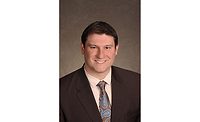Preventing Hearing Loss

One of the largest safety risks for the North American manufacturing industry is occupational hearing loss, which accounts for roughly one in every nine illnesses reported through Occupational Safety and Health Administration (OSHA) forms. In order for a person’s hearing loss to be recorded by OSHA, however, it must be determined to be work related, and the hearing loss must be severe enough that the worker has become hearing impaired. This means the true number of employees suffering hearing loss is actually much higher.
Financial Impact
While the number of employees suffering from hearing loss is staggering, the financial impact of the illness is even greater. Occupational hearing loss costs workplaces an average of $242 million a year in workers’ compensation claims alone. Yet this figure does not include medical or personal costs, which can cause the true financial impact of hearing loss to more than double.One example of the true impact of hearing loss is illustrated by a five-year study conducted in British Columbia. During this timeframe, the workers’ compensation board paid $18 million in disability awards to workers suffering hearing loss. An additional $36 million was paid out for hearing aids. In another example, the U.S. Army saved $504.3 million by reducing hearing loss among combat arms personnel between 1974 and 1994. The good news is that these costs and injuries are a preventable phenomenon.
Securing Protection
Studies by OSHA and the National Institute for Occupational Safety and Health (NIOSH) found that occupational hearing loss occurs when employees are exposed to noise 85 decibels and above for a timeframe of eight hours. (Table 1 lists decibel levels for some common noises.) Signs that noise may be a problem in the workplace include:• Employees hear ringing or humming in their ears when they leave work.
• Employees have to shout to be heard by a coworker an arm’s length away.
• Employees experience temporary hearing loss when leaving work.
The rate of hearing loss for employees exposed to these conditions is highest during the first 10 years of exposure, which means that hearing loss prevention is especially important for new workers. However, with continued exposure, the hearing loss spreads into those frequencies most needed to understand speech, so preventing occupational hearing loss is also important for workers in their middle and late careers. To protect both new and existing employees from hearing loss, it is important to have a hearing conservation program in place that addresses administrative controls, engineering controls, hearing protection, and education.
Administrative Controls
Administrative controls are changes in the workplace that reduce or eliminate worker exposure to noise. Examples include:• Operating noisy machines during shifts when fewer people are exposed.
• Limiting the amount of time a person spends at a noise source.
• Providing quiet areas where workers can gain relief from hazardous noise sources. For example, a soundproof or enclosed break room can keep noise significantly below hazardous levels.
• Restricting worker presence to a suitable distance away from noisy equipment. This effective (yet simple and inexpensive) administrative control is applicable when workers are present but are not actually working with a noise source or equipment. In open space, for each doubling of the distance between the source of noise and the worker, the noise is decreased by 6 dBA.
Engineering Controls
Engineering controls involve modifying or replacing equipment or making related physical changes at the noise source (or along the transmission path) to reduce the noise level at the worker’s ear. In some instances, the application of a relatively simple engineering noise control solution reduces the noise to the point that no further noise protection is necessary. Examples of inexpensive yet effective engineering controls include some of the following:• Choosing low-noise tools and machinery.
• Maintaining and lubricating machinery and equipment (e.g., oil bearings).
• Placing a barrier between the noise source and employee (e.g., sound walls or curtains).
• Enclosing or isolating the noise source.
Hearing Protection Devices
Hearing protection devices (HPDs), such as earmuffs and plugs, are considered an acceptable but less desirable option to control exposures to noise. These options are generally used when administrative controls are not feasible or not suitable alone to reduce noise to acceptable limits.Ear plugs are inserted to block the ear canal. They may be premolded (preformed) or moldable (foam ear plugs). Ear plugs are sold as disposable products or reusable plugs. Custom molded ear plugs are also available. Semi-insert ear plugs consist of two ear plugs held over the ends of the ear canal by a rigid headband. Earmuffs consist of sound-attenuating material and soft ear cushions that fit around the ear inside hard outer cups. They are held together by a headband.
The effectiveness of hearing protection is greatly reduced if the hearing protectors do not fit properly or if they are worn only during periods of noise exposure. To maintain the effectiveness of hearing protection devices, they should not be modified.
Selecting an HPD involves a number of factors, including the level of noise, comfort, and the suitability of the hearing protector for both the worker and their environment. Most importantly, the hearing protector should provide the desired noise reduction. The product’s noise reduction rating (NRR) is based on the amount of noise the device will eliminate. NIOSH recommends that the labeled noise reduction value be de-rated as follows:
• Earmuffs: subtract 25% from the manufacturer’s labeled NRR
• Formable earplugs: subtract 50% from the manufacturer’s labeled NRR
• All other earplugs: subtract 70% from the manufacturer’s labeled NRR
For example, a set of earmuffs rated to reduce noise by 100 dB would be viewed as reducing noise by 75 dB.
Education
Education is one of the most important aspects of a hearing conservation program. During the educational component of the program, employees must be taught administrative controls, engineering controls and the proper use of hearing protection equipment.In addition to these three topics, it is important to discuss the potential for hearing loss in the workplace, signs of hearing loss and any other pertinent information. This training should be provided upon hire and then again a minimum of once per year to remind employees of the importance of hearing protection. Manufacturers should document every time employee training is conducted, and post notices in areas that have high levels of noise to remind employees to wear hearing protection equipment.
Beyond these hearing conservation program requirements, employers must conduct workplace noise sampling, which includes personal noise monitoring to identify those employees who are at risk from hazardous levels of noise. Employers also need to maintain a worker audiometric testing program (hearing tests) in order to professionally evaluate the health effects of noise upon individual worker’s hearing and implement comprehensive hearing protection follow-up procedures for workers who show a loss of hearing (standard threshold shift) after completing baseline (first) and yearly audiometric testing. The entire program should be in writing and updated annually.
For additional information, contact the author at mrich@safetyservicescompany.com.
SIDEBAR: Ear Proctection
Employees should know which noises can cause damage and wear ear plugs when they are involved in a loud activity.110 Decibels: Regular exposure of more than 1 minute risks permanent hearing loss.
100 Decibels: No more than 15 minutes of unprotected exposure recommended.
85 Decibels: Prolonged exposure to any noise at or above 85 decibels can cause gradual hearing loss.
Looking for a reprint of this article?
From high-res PDFs to custom plaques, order your copy today!





